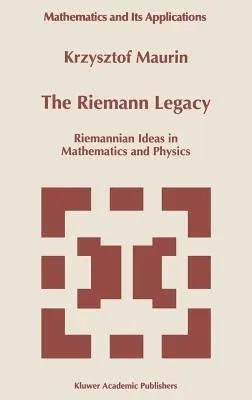Krzysztof Maurin
(Author)The Riemann Legacy: Riemannian Ideas in Mathematics and Physics (1997)Hardcover - 1997, 31 July 1997

Qty
1
Turbo
Ships in 2 - 3 days
In Stock
Free Delivery
Cash on Delivery
15 Days
Free Returns
Secure Checkout

Part of Series
Mathematics and Its Applications
Part of Series
Mathematics and Its Applications (Closed)
Part of Series
Mathematics and Its Applications Mathematics and Its Applica
Print Length
719 pages
Language
English
Publisher
Springer
Date Published
31 Jul 1997
ISBN-10
079234636X
ISBN-13
9780792346364
Description
Product Details
Author:
Book Edition:
1997
Book Format:
Hardcover
Country of Origin:
US
Date Published:
31 July 1997
Dimensions:
23.39 x
15.6 x
3.96 cm
ISBN-10:
079234636X
ISBN-13:
9780792346364
Language:
English
Location:
Dordrecht
Pages:
719
Publisher:
Series:
Weight:
1215.63 gm